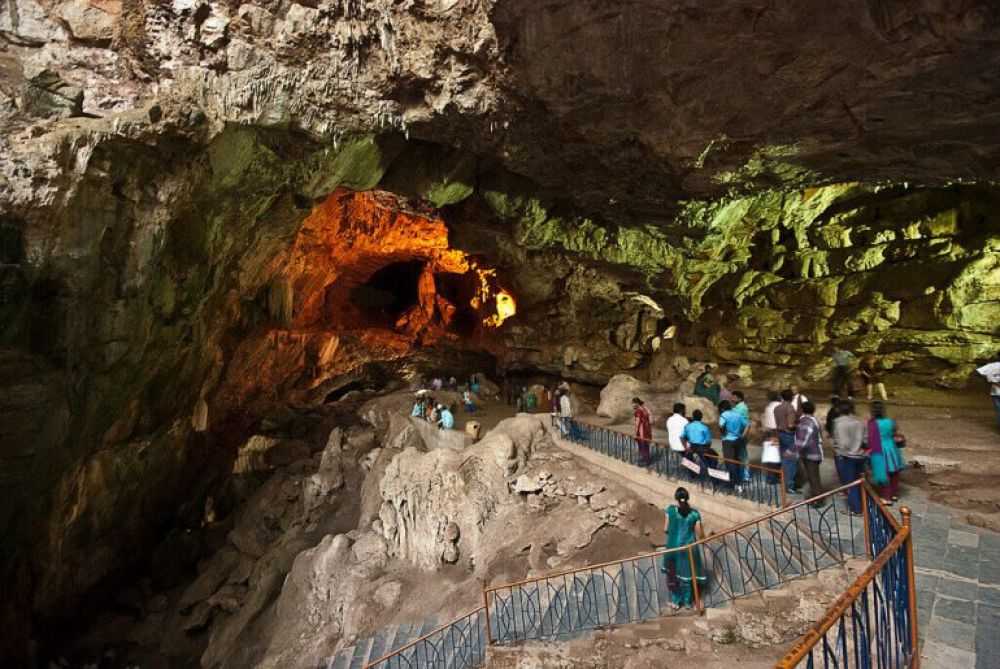

Located in the Ananthagiri hills of the Araku Valley of the Visakhapatnam district in Andhra Pradesh, India, the Borra Caves are a spectacular natural wonder that has been attracting visitors for more than a century. With their history dating back to 1807, when they were discovered by William King George of the Geological Survey of India, these caves have since been a marvel to tourists and geologists alike.
The indigenous tribes residing in the areas around Borra Caves have known about them for centuries. These caves hold religious significance for the locals who associate various stalactite and stalagmite formations with religious deities and myths. However, it was not until the discovery by British geologists that Borra Caves began to emerge as a tourism hotspot.
Initially, the natural splendor of the Borra Caves drew the curiosity of local travelers and scholars. Over time, with the development of better access paths and tourism infrastructure, the caves began to attract visitors from across the nation and around the world. The Indian government recognized the potential of the Borra Caves as a tourist attraction and has been proactive in preserving and promoting this natural heritage site.
The Borra Caves sit at an elevation of about 705 meters and are known for their impressive limestone structures that have formed over millions of years. The caves are highlighted by beautifully illuminated stalactite and stalagmite formations. A key attraction is the Shiva-Parvathi formation, which is revered by many. Tourists can also experience the depths of the cave where a small Shiva Lingam is naturally formed, which is also an important religious site.
The natural skylight occurring in the cave allows sunlight to enter and illuminate the interiors, creating an ethereal atmosphere. This natural phenomenon has added to the allure of the Borra Caves and has provided photographers with spectacular photo opportunities.
The influx of tourists to the Borra Caves has had a significant impact on the local economy. The tourism industry has created numerous employment opportunities for the local tribes and residents in the form of guides, souvenir shop owners, and other small service-based businesses catering to the needs of visitors.
With advances in technology and increasing global connectivity, modern tourists are looking for more immersive and sustainable travel experiences. There is a trend towards eco-tourism and cultural tourism, with an emphasis on minimizing environmental impact and preserving local culture. Maintaining the pristine condition of the Borra Caves while accommodating the growing number of visitors poses a challenge that the authorities are continually addressing.
Today, the Borra Caves stand as not only a natural wonder but also a testament to India’s dedication to preserving its rich geological and cultural heritage. The combined appeal of historical significance, natural beauty, and spiritual importance ensures that the caves remain a favored destination for diverse tourists, contributing to the colorful tapestry of Indian tourism.